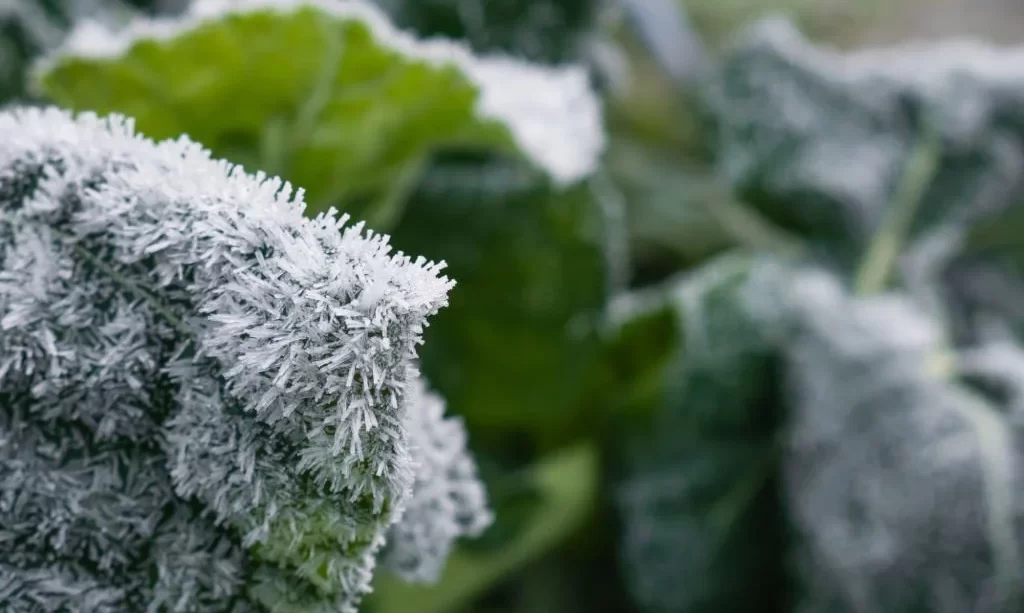Collard greens, with their dark, nutrient-packed leaves, have earned a well-deserved reputation as a healthy and versatile vegetable. Whether you grow them in your garden or purchase them fresh from the market, you may find yourself wondering if there’s a way to extend their shelf life. In this article, we will explore a simple and effective method: freezing collard greens. Freezing not only helps prevent food waste but also ensures that you have this nutritious ingredient on hand whenever you need it. Let’s dive into the steps and techniques for freezing collard greens, starting with the initial preparation.
- A Terrific Tasty Antioxidant Rich Green Veggie
- Collard Greens Are A Healthy Super Food
- Collard Greens Are high in fiber and Nutrients
- Makes addition to soup or side dish
- Can be used in place of any other greens
Preparing Collard Greens for Freezing
Before you embark on the freezing process, it’s essential to start with fresh and vibrant collard greens. The first step involves carefully inspecting your greens to ensure they are free from damage or wilting. Once you’ve selected top-quality collard greens, it’s time to clean them thoroughly. This includes rinsing them under cold water to remove any dirt, sand, or debris. Pay special attention to the folds and crevices in the leaves where grit can hide. After the initial rinse, you may want to soak the collard greens in a basin of cold water to further loosen any stubborn particles. Once clean, drain the greens and move on to the next step: removing the tough stems and any damaged leaves.
Blanching Collard Greens
Blanching is a crucial step in preparing collard greens for freezing. It serves several important purposes, such as preserving the color, flavor, and nutritional value of the greens while also killing any potential bacteria. To blanch collard greens, you’ll need a pot of boiling water and a large bowl of ice water. The process involves submerging the cleaned and trimmed collard greens into the boiling water for a brief period, usually around two to three minutes. This quick cooking process is followed by immediately transferring the greens to the ice water bath. The ice water halts the cooking process and helps retain the bright green color and nutrients. Once blanched and cooled, the collard greens are ready for the final steps in freezing, which we’ll cover in the upcoming sections.
Proper Packaging for Freezing
After you’ve blanched and prepared your collard greens, the next critical step is proper packaging for freezing. It’s essential to use containers or freezer bags specifically designed for long-term freezer storage. These containers should be airtight and able to withstand freezing temperatures without becoming brittle or cracking.
When placing the collard greens into these containers or bags, remember to remove excess air to prevent freezer burn, which can compromise the quality of your greens over time. You can achieve this by pressing the packaging flat to remove air pockets or using a vacuum-sealing system if available.
Additionally, labeling is crucial. Clearly mark the container or bag with the date of freezing. Proper labeling helps you keep track of freshness and ensures you use the oldest greens first when you’re ready to cook.
Freezing Collard Greens
Once your collard greens are prepared and properly packaged, it’s time to move them into the freezer. Ensure your freezer is set at the ideal temperature for preserving greens, typically at or below 0°F (-18°C).
When placing the containers or bags in the freezer, arrange them in a way that maximizes space efficiency and allows for easy retrieval. You can lay bags flat to create stacks or use stackable containers. Just remember not to overcrowd your freezer, as good airflow helps maintain consistent temperatures.
The collard greens should freeze relatively quickly in the freezer’s low temperatures. The goal is to have individual leaves or portions frozen, which will make it easier to remove only what you need when it’s time to cook. Properly frozen collard greens can remain in the freezer for several months without significant loss of quality.
With the collard greens now safely stored in your freezer, you’re well on your way to enjoying their nutritional benefits and delicious flavor year-round. In the next sections, we’ll explore how to thaw and use your frozen collard greens, as well as the advantages of freezing this nutritious vegetable.
Thawing and Using Frozen Collard Greens
When you’re ready to incorporate your frozen collard greens into your meals, proper thawing is essential. The safest method is to transfer the greens from the freezer to the refrigerator and allow them to thaw gradually. This slow thawing process helps maintain their texture and nutritional value. Depending on the quantity and thickness of the greens, it may take several hours or overnight to thaw completely.
If you’re in a hurry, you can use the cold water thawing method. Place the frozen collard greens in a sealed plastic bag and immerse them in cold water. Change the water every 30 minutes to ensure a consistent temperature. This method is faster than refrigerator thawing and takes a few hours.
Once your collard greens are thawed, you can use them in various recipes. They work well in soups, stews, casseroles, and sautés. Be sure to cook them thoroughly to ensure food safety and to achieve the desired tenderness. Frozen collard greens retain much of their flavor and nutritional value, making them a convenient addition to your dishes.
Benefits of Freezing Collard Greens
Freezing collard greens offers several benefits for busy households and avid gardeners. Firstly, it’s an excellent way to reduce food waste, as you can preserve surplus greens for future use. This not only saves money but also contributes to a more sustainable kitchen.
Secondly, freezing helps maintain the nutritional value of collard greens. Blanching before freezing helps lock in vitamins and minerals, ensuring that your frozen greens remain a healthy addition to your meals.
Lastly, freezing collard greens provides convenience. Having a stash of frozen greens means you can enjoy their flavor and benefits year-round, even when they’re out of season or you’re short on time. It simplifies meal preparation and allows you to incorporate these nutritious greens into your diet whenever you please.
Conclusion
In conclusion, freezing collard greens is a simple and effective way to extend their shelf life and make the most of this nutritious vegetable. With proper preparation, blanching, packaging, and storage, you can preserve the color, flavor, and nutritional value of collard greens for months. Thawing and using frozen collard greens is straightforward and allows you to enjoy their benefits in a wide range of recipes.
So, the next time you have an abundance of collard greens or simply want to ensure you always have this nutritious ingredient on hand, consider freezing them. It’s a practical and sustainable solution that not only reduces food waste but also enhances your culinary options. With frozen collard greens at your disposal, you can savor their flavor and reap their health benefits throughout the year.



![YESOON [30 Pack Reusable Freezer Food Storage Containers with Lids [26oz-40oz-70oz] Plastic Meal Prep Container Sets Bento Box BPA Free Freezer & Microwaveable & Dishwasher Safe](https://m.media-amazon.com/images/I/41MVKSR5kKL._SL160_.jpg)

